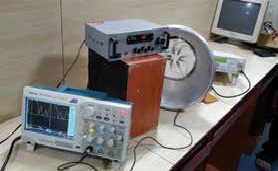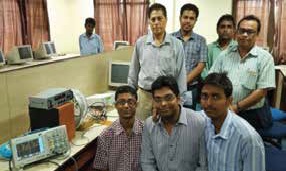Sound Energy to useful Electrical Energy
Introduction
Availability of energy resources, specifically non-renewable sources is getting harder day by day. In order to cope with the growing demands of the mass, various techniques has evolved which technically converts the renewable resources available to useful energy. The various renewable resources available are solar, wind, geothermal etc. Another such form of energy which is available to a great extent in the environment, but mostly gets wasted a way is SOUND. ‘SOUND’ is a source which engulfs every phase of life and environment, always goes wasted once produced. In this project we have discussed about a new power generation method which converts the sound energy that is available in the environment in to useful electrical energy using peizo materials commonly called the piezo electricity. Moreover, the final results obtained always contained the help from some external sources which normally included batteries. Here from the hardware part we have specifically tried to focus our concentration on the apparatus setup by using sound converging techniques, thereby trying to avail the maximum input energy. Also our preliminary objective was to omit the application of various power sources required to run the circuit as previously practiced there by obtaining the electrical output from the sound source itself resulting in better accuracy and efficiency.
 |
|
Piezo vibration censor arrangement on the membrane |
Complete experimental setup |
Achievements
1) Previously efforts have been made to convert the sound energy into useful electrical energy. But it was observed that the amount of energy generated was partially used to run the circuit which included opamps. But in our work we have primarily focused not to use any other external power sources to run the circuit which is completely a different approach made towards this project.
2) The output obtained was the most optimal one because we have tried to keep the circuit as simple as
possible. Even the diodes used for making the rectifier circuit were schottky diodes because the voltage drop of each diode was 0.2-0.4 at forward conduction mode. Also since we have not used any other
external sources so the output obtained was solemnly from the crystals itself.
3) We have used the concept of sound converging method in order to focus the maximum sound towards the
centre of the membrane.
4) As the crystal and membrane were selected our main objective was to get maximum vibration from the
membrane as we know more vibration will give more output which is nothing but charge. For these
reasons we started placing crystals at different positions of the membrane. Through several tests we found
that the vibration towards the centre is more. As a result we placed each of the crystals in such a way that
their weighting elements remained concentrated towards the centre thus sensing the maximum vibrations.
Our circuit is nothing but an adder circuit which sums up charge generated by each crystal. For these
reasons we placed our crystals focusing towards the centre. Also the sensor used had a small weight on
the top of the film which provided better results during vibrations. Thus because of this we have placed
the sensors towards the centre in order to sense the maximum possible vibration from the surroundings.
For further information please contact
Calcutta Institute of Engineering & Management,
24/1AChandi Ghosh
Road,Tollygunj, Kolkata
West Bengal 700040
Email : sougata.sougata@gmail.com








